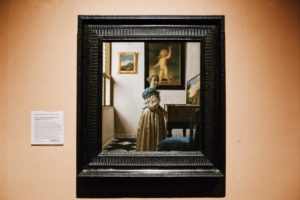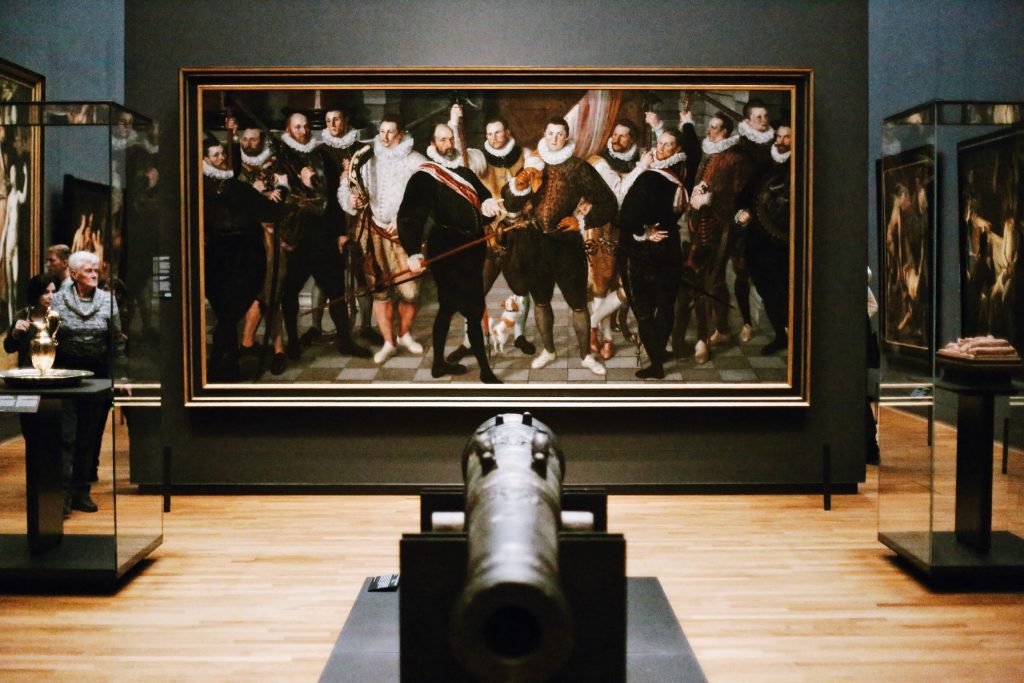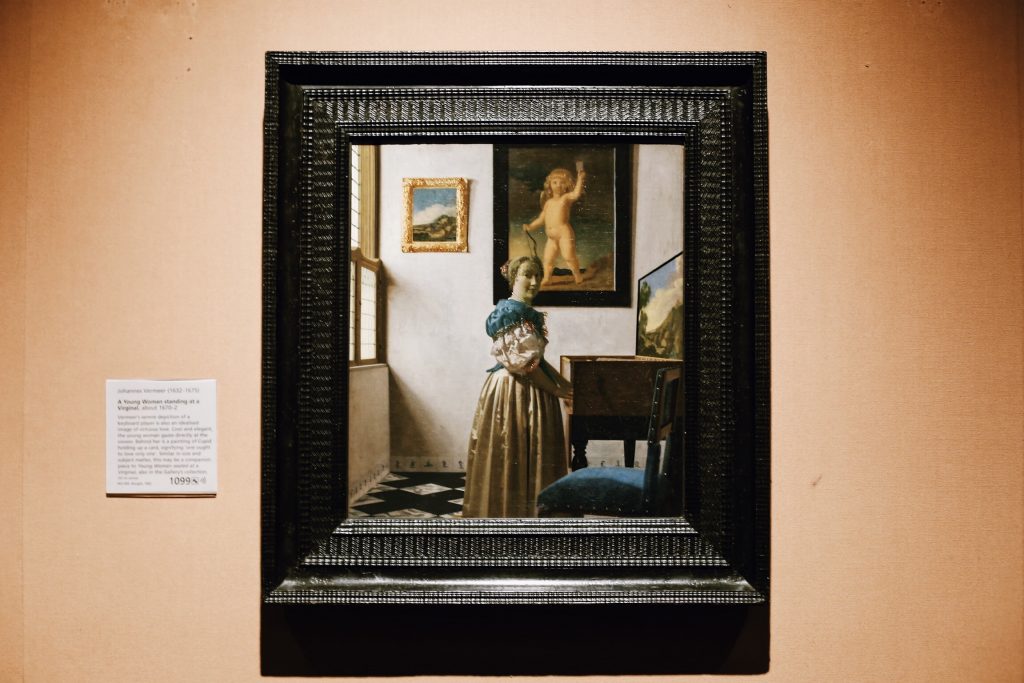
Rijksmuseum is a national art and history museum located in Amsterdam. This spectacular museum is situated in the Museum Square in a town in Amsterdam South. You also get to easily visit the famous Van Gogh and Stedelijk museums after your Rijksmuseum tour, since all three establishments are located next to each other.
A Rijksmuseum guided tour can give you glimpses at a vast collection of famous and iconic works, including Vermeer paintings and Rembrandt paintings. Among the 36 works which are fully attributed Johann Vermeer, four are displayed at the Rijksmuseum. Below are some other wonderful must-sees here, including ones by other famous artists which tourists often overlook in favor of bigger names.
The Wedding Portrait Of Isaac Massa And Beatrix Van Der Laen
This beautiful wedding portrait created by Frans Hals gives a quick insight into the typical 17th century Dutch wedding. What is unusual about the painting is that at the time, it was not common for couples to sit next to each other, or even sport smiles the way this one does. This beautiful work alludes to the traditional concepts of love and fidelity during those times. A closer look also shows you creeping ivy, which symbolizes everlasting love.
The Kitchen Maid
Vermeer’s painting “The Kitchen Maid” is actually one of his later works. In it, you see the interior of a kitchen, and a maid there who is engaged in a daily household activity. Specifically, her main focus is on pouring the milk out of a pitcher she is holding in her hand. This is the only depiction of movement portrayed in the otherwise immobile scene. If you take a look at the surroundings, you will notice that all the objects shown are directly related to a typical middle-class home of those times, including the brazier that was used for holding a flame. Look more carefully at the Delft tile near the brazier, and you also see an image of Cupid, which may be a shot at the questionable reputation of milkmaids, which again, was something common to those times.
Some art experts say that Vermeer actually made use of a technique called camera obscura in this picture, employing it to pinpoint certain reflections and points of light in the beautiful scene. Some also say the wall to the back actually had a map, and that the artist skipped that bit.
Battle Of Waterloo
Battle Of Waterloo is a painting done and finished by Jan Willem Pieneman, who based its scene on the eponymous battle which took place in the village of Waterloo to the south of Brussels. In this painting, you can see a series of events which actually did not occur at that particular time, considering that historically, that war came to an end upon Napoleon Bonaparte’s defeat.
The massive painting shows battlefield scenes. You can see a hatless man standing in the sunlight, who has just found out that more Prussian troops will be arriving to bolster the Anglo-Dutch army in their ongoing battle against the French. The picture also shows the commander of the troops — or “Hero of Waterloo” — lying wounded on the ground, but with a smile he musters on hearing the happy news. The British army’s commander can be seen pointing with his tricorne at the approaching reinforcement.
Jeremiah Lamenting the Destruction of Jerusalem
This painting was actually created based on the Biblical story where the prophet Jeremiah warns the king of the destruction of Jerusalem if he does not take heed of the demands of his rivals. The king neglects this prophecy and as a result, Jerusalem gets burned to the ground. The picture actually portrays the Biblical prophet Jeremiah himself, shedding tears after the event. This is one of the most impressive works from Rembrandt, who painted it before he left Leiden city. In this painting, you can see a contrast of light and dark effects which he skillfully inserted in order to separate crucial details from less important ones. This effect also made the image look more dramatic.
Serenade
Serenade is an amazing painting by Judith Leyster, who started her painting career working at the studio of Frans Hals. She is one of the first known women to have opted for a painting career in the 17th century, and also the sole female painter to have been listed among the artists’ guild. In this painting, you can see a lute player singing and playing his instrument. You also see Leyster has painted his clothes out of focus, diverting attention to his face instead, which in a painting was an effect that was new at the time. The lute player strikes a laid back poses where he is holding his head up.

